Earth - Inside and Out
Earth is a fascinating planet with a complex structure. It is composed of different layers, each with its own unique characteristics. Understanding the internal and external features of the Earth is essential for gaining insight into geological processes and the dynamic nature of our planet.
Layers of the Earth
The Earth can be divided into several layers based on composition and physical properties:
- Crust: The outermost layer of the Earth, the crust is relatively thin and is composed of solid rock. It is further divided into continental crust and oceanic crust.
- Mantle: Beneath the crust lies the mantle, a much thicker layer composed of solid rock that can flow slowly over long periods of time. The mantle is divided into the upper mantle and the lower mantle.
- Outer Core: Below the mantle is the outer core, which is composed of liquid iron and nickel. The movement of the outer core generates the Earth's magnetic field.
- Inner Core: At the center of the Earth lies the inner core, which is a solid sphere consisting of iron and nickel. The high pressure at the core keeps these metals in a solid state despite their high temperatures.
Geological Features
The Earth's surface is shaped by various geological processes and features, including:
- Mountains: Formed through tectonic activity, mountains are elevated landforms that can be found on every continent.
- Volcanoes: These are openings in the Earth's crust through which molten rock, ash, and gases are ejected. Volcanoes can form on land or underwater.
- Plate Tectonics: The Earth's crust is divided into large, rigid plates that move and interact with each other, leading to earthquakes, volcanic activity, and the formation of mountain ranges.
- Oceans and Continents: The Earth's surface is covered by large bodies of water (oceans) and landmasses (continents), which are constantly changing due to erosion and tectonic movements.
Studying the Earth's Interior
Geologists and scientists use various methods to study the Earth's interior, including:
- Seismic Waves: By analyzing the behavior of seismic waves (such as P-waves and S-waves) as they travel through the Earth, scientists can infer the properties of the different layers beneath the surface.
- Rock Samples: Examining rock samples from the Earth's crust and mantle provides valuable information about the composition and structure of these layers.
- Geophysical Surveys: Techniques such as magnetometry, gravimetry, and electromagnetic surveys are used to map the subsurface features and study the Earth's magnetic and gravitational fields.
- Computer Modeling: Advanced computer simulations help scientists visualize and understand the complex processes that shape the Earth's interior.
Study Guide
Here are some key points to remember when studying the Earth's interior and exterior:
- Identify the different layers of the Earth and their characteristics.
- Understand the geological processes that shape the Earth's surface, including plate tectonics, volcanism, and erosion.
- Explore the methods used by scientists to study the Earth's interior, such as seismic analysis, rock sampling, and geophysical surveys.
- Examine the relationship between the Earth's internal structure and its external features, such as mountain ranges, ocean basins, and volcanic activity.
- Consider the dynamic nature of the Earth and how it continues to evolve over time.
By gaining a deeper understanding of the Earth's internal and external features, we can appreciate the complexities of our planet and the forces that have shaped it over millions of years.
.◂Science Worksheets and Study Guides Fourth Grade. Earth - Inside and Out

 Activity Lesson
Activity Lesson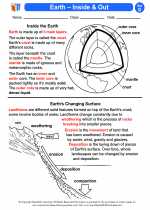
 Worksheet/Answer key
Worksheet/Answer key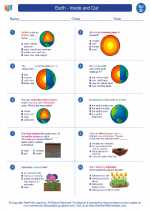
 Worksheet/Answer key
Worksheet/Answer key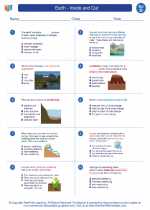
 Worksheet/Answer key
Worksheet/Answer key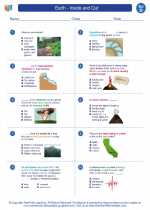
 Worksheet/Answer key
Worksheet/Answer key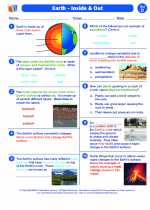
 Vocabulary/Answer key
Vocabulary/Answer key
 Vocabulary/Answer key
Vocabulary/Answer key
 Vocabulary/Answer key
Vocabulary/Answer key
 Vocabulary/Answer key
Vocabulary/Answer key
 Vocabulary/Answer key
Vocabulary/Answer key
 Vocabulary/Answer key
Vocabulary/Answer key
 Vocabulary/Answer key
Vocabulary/Answer key
 Vocabulary/Answer key
Vocabulary/Answer key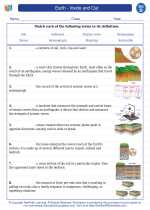
 Vocabulary/Answer key
Vocabulary/Answer key
